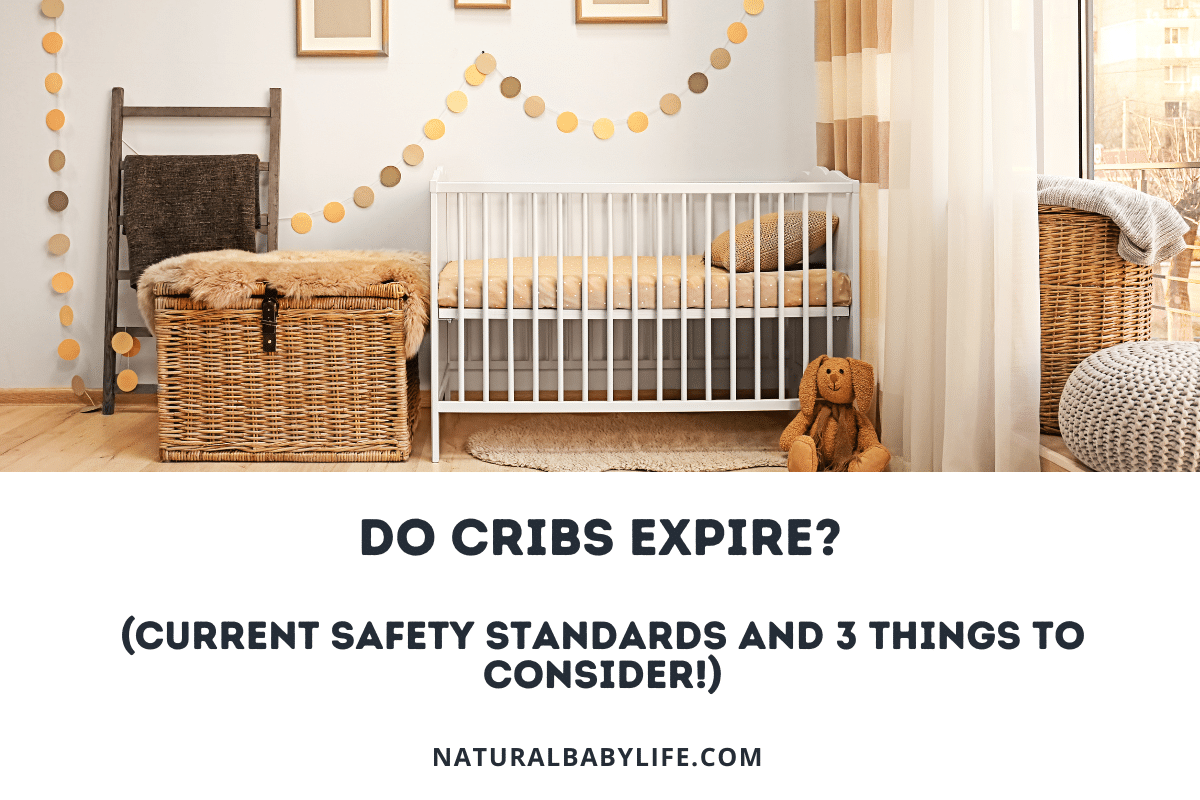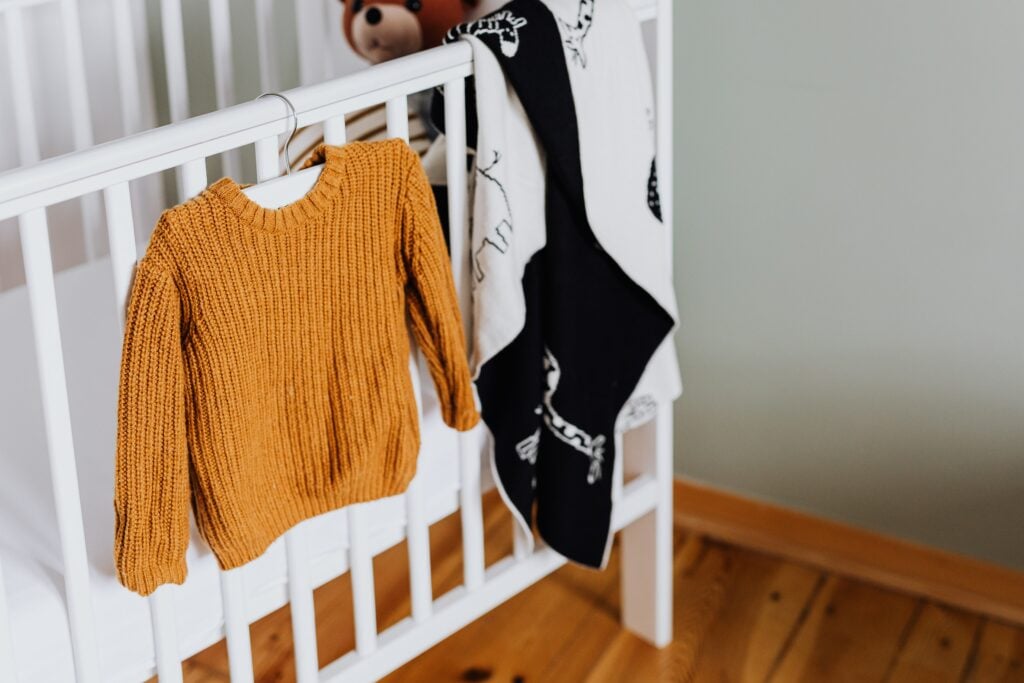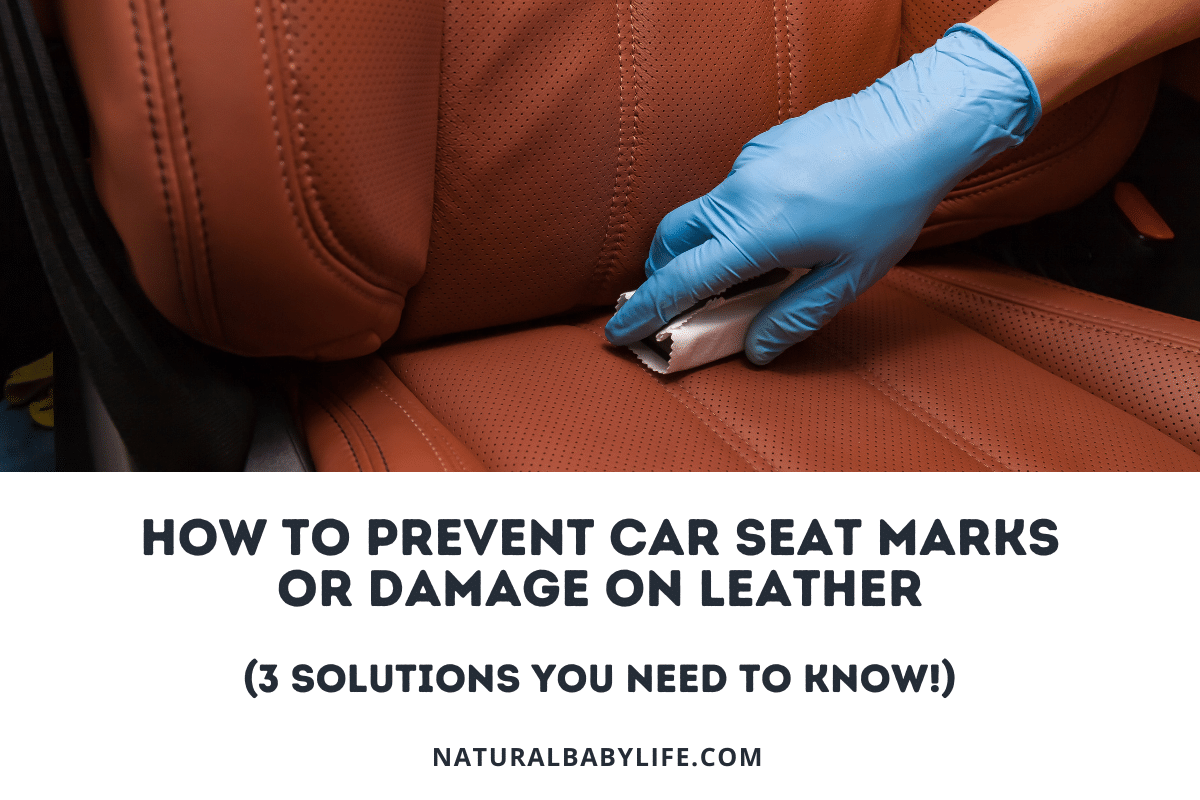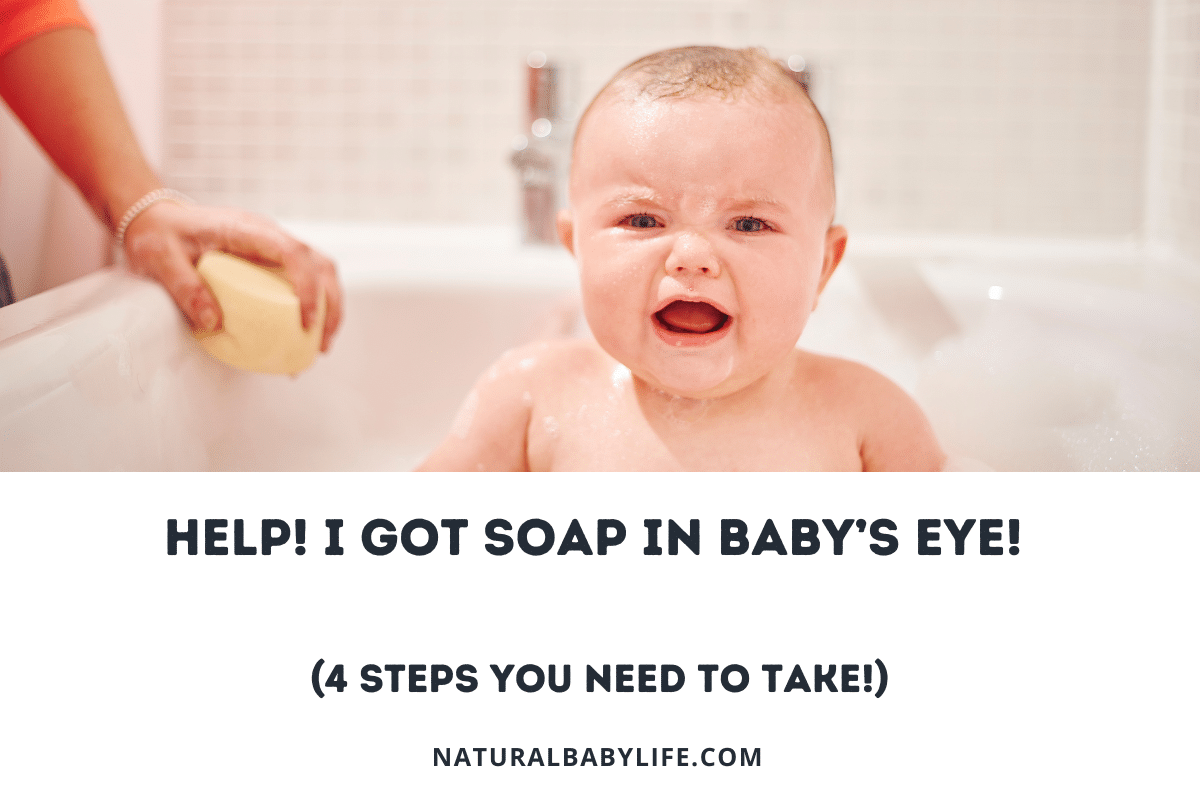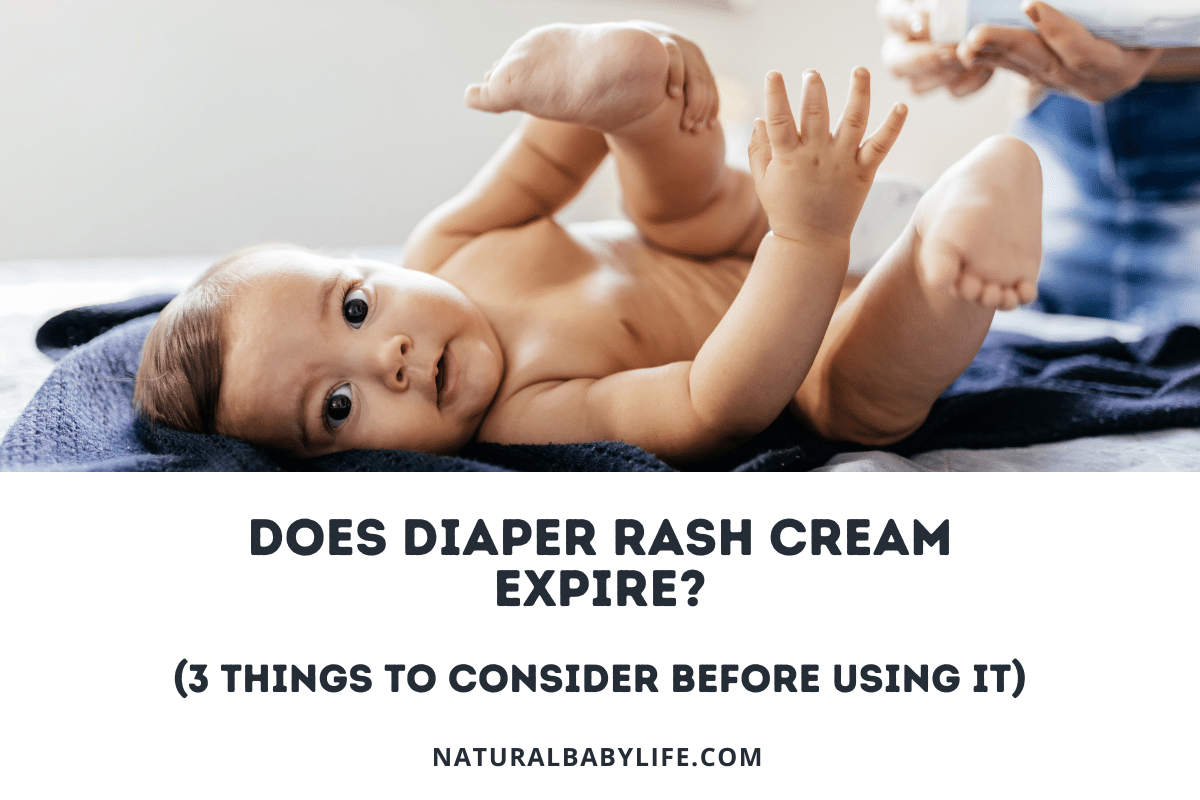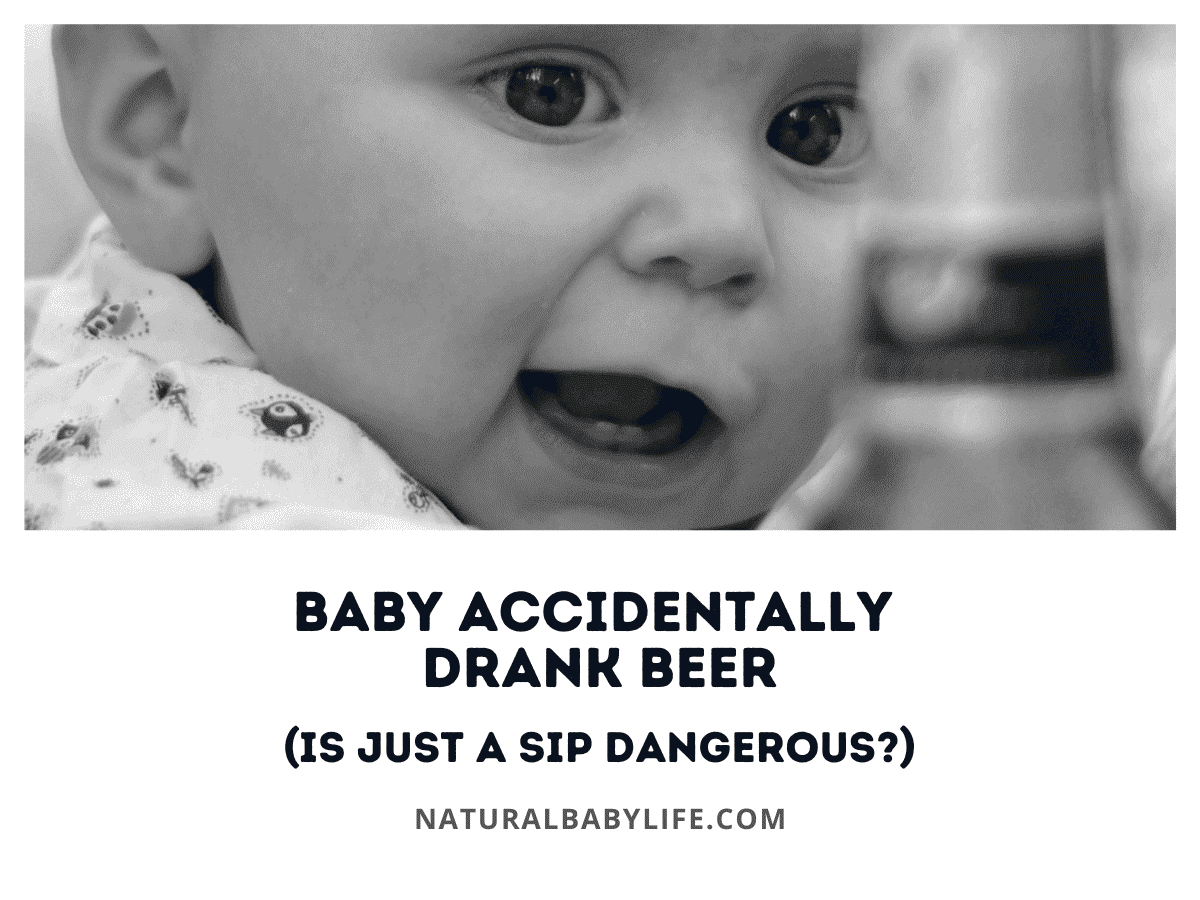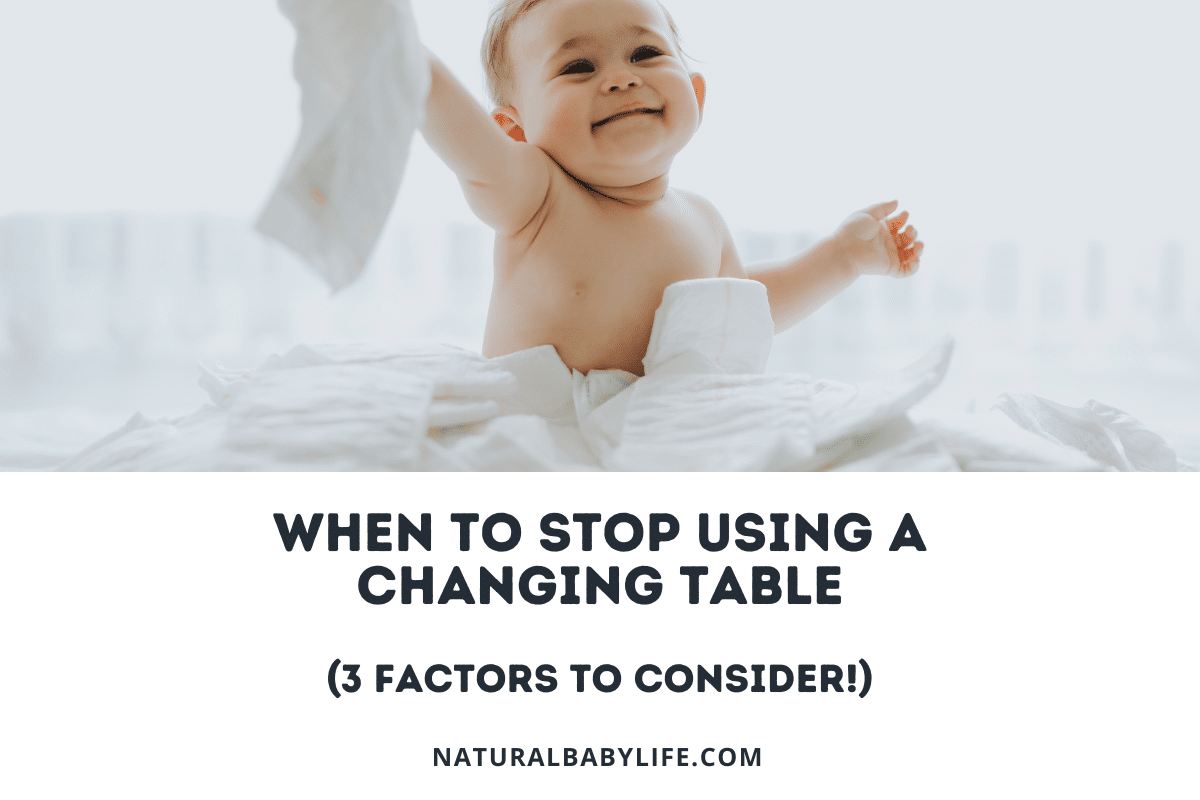In our modern society, many products we own are meant for temporary use and then get thrown away all too quickly. That shouldn’t be the case with our beautiful furniture, right? Not exactly. Baby gear and furniture must meet certain standards to be the safest for our children—baby cribs included. Meaning, old products may no longer be ideal to use. For this reason, many parents wonder do cribs expire?
Infant cribs don’t exactly “expire,” but some older models do not meet today’s safety standards and regulations. It is recommended that you check the safety of your used crib before allowing your infant to sleep in it.
Read on to learn more about current crib safety standards, as well as some tips to help determine whether or not to use your old crib.
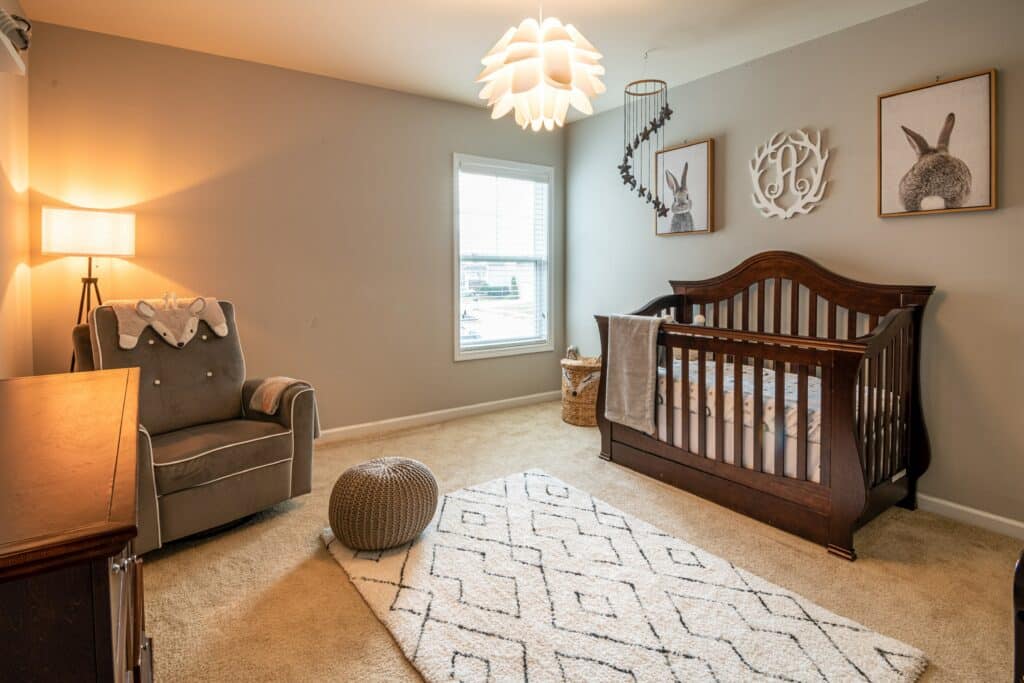
Table of Contents
Do cribs expire?
Infant car seats often come with an expiration date on them to make it easier for parents to know how long they’re safe. However, cribs are not as easy to navigate. Baby cribs do not have an official expiration date from the manufacturer. However, many older cribs also don’t meet the latest safety standards and regulations set in place by the US Consumer Product Safety Commission (CPSC.)
Cribs become outdated and not recommended for use when regulations change and they no longer meet them. To determine whether your used crib is not recommended for use, start by checking if it has been recalled. To check for a recall, visit the crib manufacturer’s website and enter the crib model number. You can also visit the CPSC website to browse their Recalls and Product Safety News section.
While there’s no set expiration date, baby cribs expire in the sense that after a period of time, they might not meet the safety standards. This makes them unsafe for your baby to sleep in.
Baby crib safety standards and regulations for 2023
The United States CPSC first began releasing regulations for full-sized infant cribs in 1973. Since then, they have amended and updated these regulations to fit the needs of consumers. New products are being manufactured each year, so they must keep up with new technology and parents’ needs.
In June 2011, CPSC released modern standards that crib manufacturers must uphold. Cribs sold in America any time after this date must adhere to these modern safety standards. So, if your used crib was made before that year, it may not meet those requirements.
Still, you may not want to put your crib to waste. Even though your crib is a tad old, it may still be okay to let your child sleep in it. These next few sections will cover everything that you should keep in mind while evaluating whether or not you can use that old crib.
Slat Spacing
The slats on the walls of your baby’s crib are a safety hazard if they are not properly manufactured. Law requires these spaces to be less than 2 ⅜ inches. Don’t have a ruler handy? Use The Soda Can Trick to easily measure the slats:
If a regular soda can is able to fit through the slats, it is too wide. That means it is unsafe for a baby to sleep in. If these bars are too far apart, you could risk your baby’s legs, arms, or torso getting wedged between them.
I’ve gone into more detail about how to prevent babies from getting their legs or arms stuck in the crib. You can check out that resource right here!
Depth
Cribs should be deep enough so that your child cannot climb up and over the rails. CPSC requires that the top rails of a crib be 26 inches or more above the top of the mattress support when it is in its lowest position.
In addition to the depth of your baby’s crib, there are also requirements on the height of corner posts. These parts should not extend 1/16 of an inch above the headboard unless it’s for a canopy. If these posts are too high, children’s clothing can get caught on the posts and risk strangulation.
Materials
The US Consumer Product Safety Commission puts strict regulations on the materials that are used for baby cribs and baby crib accessories such as mobiles. Here is what they look for:
- Slats or spindles on cribs must be made with strong wood. This will prevent breakage. The wood pieces need to be strong enough that they don’t become loose or fall apart if your child pulls on them. As many parents know, babies can have a strong grip!
- Mattress supports should be strong and not susceptible to breakage.
- Crib mattresses should be firm and fit snugly into the crib frame. Make sure the mattress you have is compatible with the crib. Products that do not fit well within the crib frame could cause a baby to slip in between gaps.
- The headboard and footboard should not have any design cutouts.
By the way, I recently took a look at whether or not crib mattresses expire that you might want to check out to learn more!
Drop-side cribs are no longer considered safe
Manufacturers are no longer allowed to build and sell drop-side cribs. This was the result of hardware failing and causing accidents across the nation. In some cases, the drop-side wall partially detached from the crib, exposing a gap between the crib and the wall.
If this occurs, the infant can potentially get trapped in this exposed space and risk strangulation or suffocation. In the past twenty years, these drop-side cribs have resulted in 32 infant deaths.
Still don’t want to get rid of the drop-side crib you used to sleep on as a child?
If you have one of these cribs and still wish to use it, some manufacturers offer an immobilizer. This nifty piece will fit on the crib to keep the drop-side in place and prevent it from dropping down. Check your manufacturer’s site to see if this is an option for you.
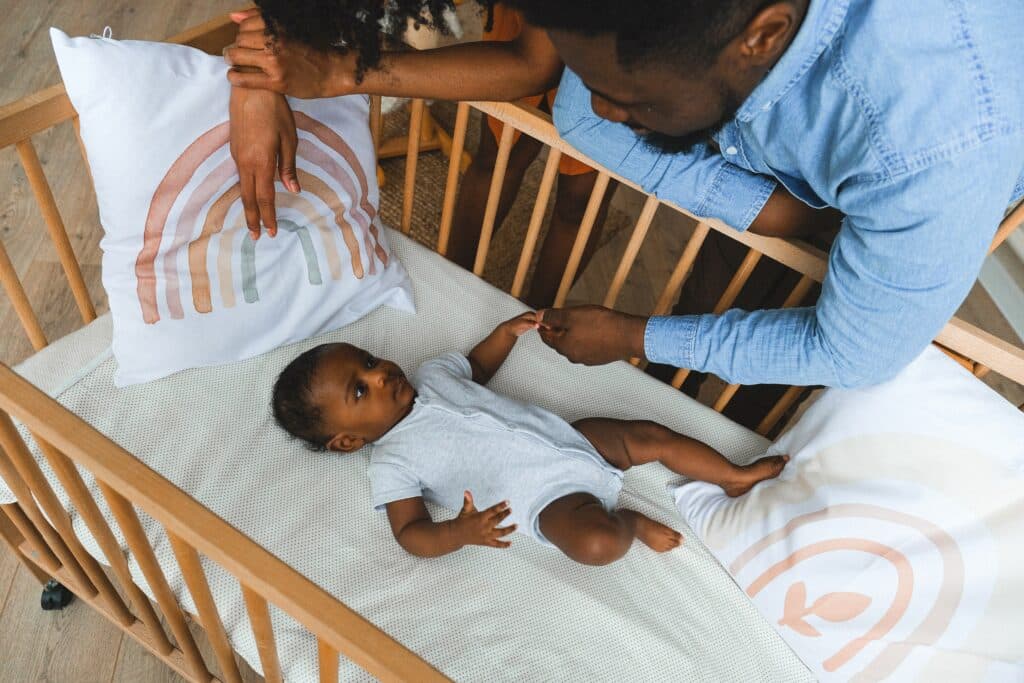
Is it safe to use old cribs?
There are many things you should consider when using an old or used crib. Over the years, regular wear and tear can happen to these pieces of furniture even if they were not recalled.
Keep in mind how the crib has been taken care of over the years. Has it stayed in a single spot, relatively untouched, or have you moved the crib often throughout the years? If a crib has been assembled, disassembled, then reassembled multiple times, there’s a risk of missing parts or improper assembly.
Hardware like screws can wear down and make the crib unsafe. Some old cribs can pose threats both to newborns who cannot yet roll over on their own, as well as older infants who have started to pull themselves up to a standing position.
How old can a crib be and still be safe?
It’s probably not a good idea to give your baby the same crib their grandparents slept in over 50 years ago—no matter how precious the heirloom. Cribs made before 1978 may put you at risk for a lead paint hazard.
As a good rule of thumb, CPSC recommends that parents avoid using cribs that are over ten years old.
If you aren’t sure about the crib you have and want to explore crib alternatives I’ve made a whole resource to help get you started!
How to make an old crib safe
If you want to renew the life of an old crib, start by carefully inspecting it to check if it has the potential to be used again. Check for signs of wear and tear like
- Peeling paint
- Wood splinters
- Loose parts
- Rough patches on the crib
You may have to get a little rough and shake the crib parts, including the side slats, to make sure nothing is loose and no screws are missing.
If you are a DIY-er and determined to get some more use out of that old crib, here are some things you could do to improve its safety:
Install new hardware – If your crib has been taken apart and put back together multiple times, you may want to take a close look at the hardware. Remove old, stripped screws and replace them with new pieces that are operational and safe.
Add more slats – If your crib does not pass the soda can test, (and you’re a decent woodworker) you could add more slats to the crib to reduce the spacing in between.
Get a new mattress – Avoid using an old mattress, as these can wear out and become too soft or carry bacteria. Purchase a new one that fits the frame of your crib snuggly.
Test the paint for lead – Hardware stores sell kits that allow you to test paint for lead. If lead exists, you may be tempted to strip it and repaint it. Unfortunately, the lead can seep into the wood and remain there even if the paint layer is gone.
If there is no lead and it’s safe to repaint, use a non-toxic paint stripper. Make sure it is environmentally-friendly and safe for your baby. Then, find a new paint that is made specifically for children’s furniture—free of lead and other toxic materials.
Also, be sure that the old crib mattress is safe as well! Baby mattresses should be very firm or almost hard to ensure safe sleeping for your infant. Check out my resource on mattresses that shows you how to check the firmness of a crib mattress!
What can you do with old cribs?
While it is crucial to keep up with the current safety standards for infant cribs, it can feel like a waste to get rid of a seemingly fine piece of furniture. If you have a used baby crib or perhaps even a family heirloom that will not meet today’s strict crib safety standards, there are many fun upcycling projects you can do with it:
- Children’s desk
- Toddler bed
- Dog crate
- Bike rack
- Bookshelf
Frequently Asked Questions (FAQs)
Is it okay to use old cribs?
Based on the safety standards from the U.S. CPSC, it’s not recommended to use cribs that are more than 10 years old. Keep this in mind when determining whether an old crib is safe for your baby.
Can I use a 10 year old crib?
It’s not recommended to use an old crib older than 10 years old. If you are considering using a used or hand-me-down crib, check for recalls and check if it meets the current safety standards.
Can I use my 30 year old crib?
A crib that’s 30 years old likely doesn’t meet the current safety standards and could put your baby at risk. If you don’t want to get rid of it, there are many ways to repurpose an old crib.
Can I use an 11 year old crib?
The U.S. CPSC recommends not using cribs older than 10 years, so check if your crib keeps up with current safety standards. It’s also important to check for recalls before using an older crib.
Conclusion
While baby cribs don’t exactly expire, they do need to meet certain safety standards. Modern safety standards were released in 2011, so any crib made before that year may not meet the standards. Keep this in mind if you’re planning on using an older or used cribs.
No matter how seasoned the parent, it can be a challenge to raise healthy, smart, and kind kids. For the best tips on parenting and answers to your frequently asked questions, keep reading helpful guides like this.

